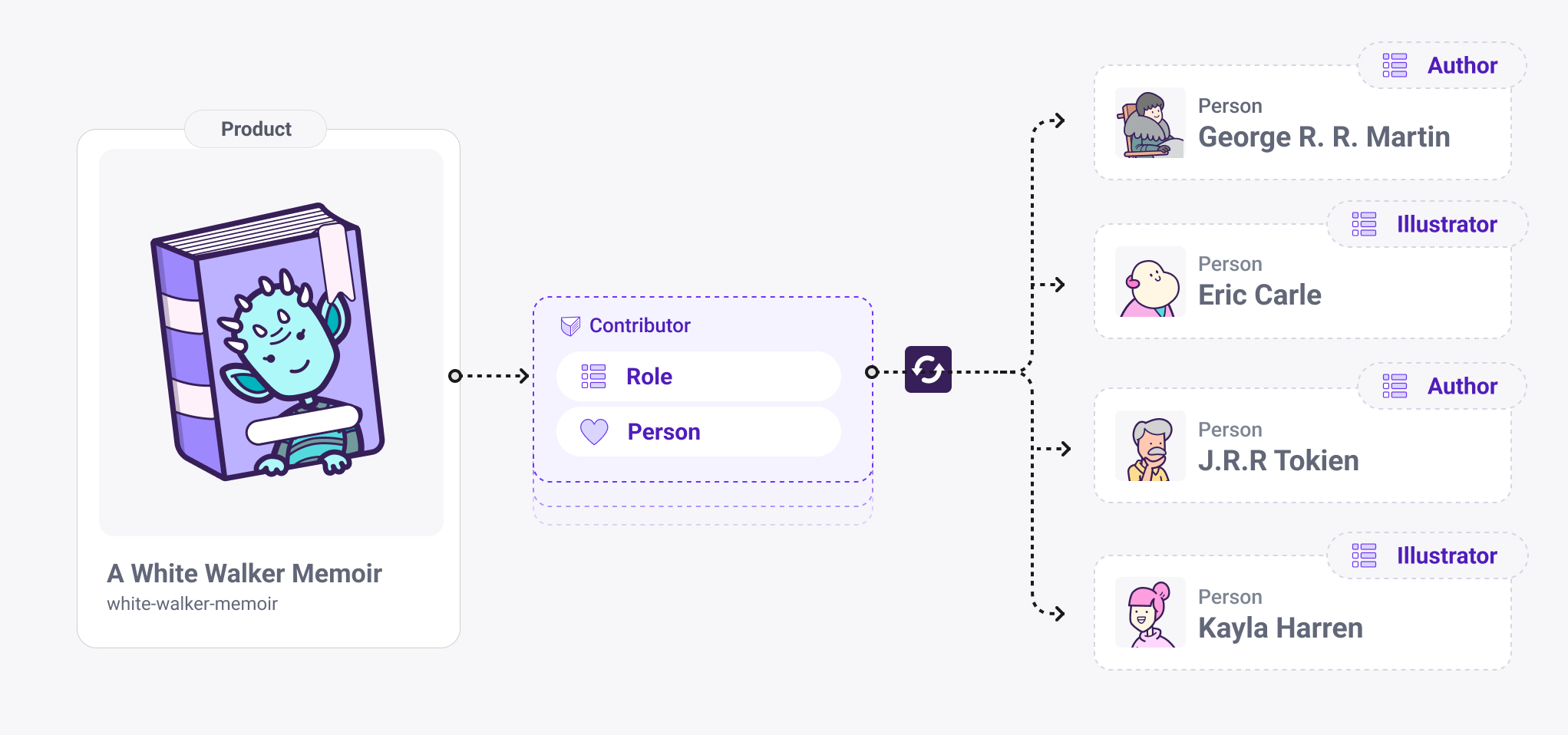Composite classification bridge
Adding semantic meaning to item relations
The Composite classification bridge allows you to create item relations that carry meaning. Instead of linking items without context, you can describe what the relation represents. This pattern is useful when you want rich storytelling, structured data and predictable frontend behavior.
Examples include linking a book to its contributors and describing their role, or linking a product to materials and describing where each material is applied such as lining, sleeve or collar.
This guide walks through the pattern, the schema setup and how to query and use this structure for more expressive product models.

Why semantic relations matter
Simple item relations can connect one item to another but do not tell you why they are connected. Without meaning you cannot reliably present the relation in a storefront or process it in any automated flow.
Semantic relations fix this by adding explicit classification of what each relation represents. This gives you:
- Structured meaning for relations
- Better editorial control
- Richer product storytelling
- More precise frontend experiences
Typical use cases
You can use the Composite classification bridge for:
- Contributors such as author, illustrator, editor
- Materials such as wool, cotton, polyester and where they are applied
- Components in modular products
- Accessories and the type of relationship
- Any product relation that needs meaning
Design pattern overview
A typical structure looks like this:
- Product or item
The main item you enrich with meaningful relations. - Repeating chunk
Each entry in the chunk represents one relation.
A single relation entry includes: - A classification that describes the relation meaning (often a selection component)
- An item relation that points to the related item
This gives editors a predictable structure and frontends a clean data model.
Examples
Book with contributors and their role
A book may link to several people. For each person you classify the role such as writer, illustrator or editor.
Product with materials and where they are applied
A jacket may list materials like wool for the lining or polyester for the sleeve.
Component relationships in modular products
A modular sofa may link to components such as legs, fabric bundles or cushions, each with a relation type.